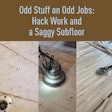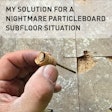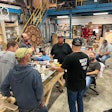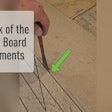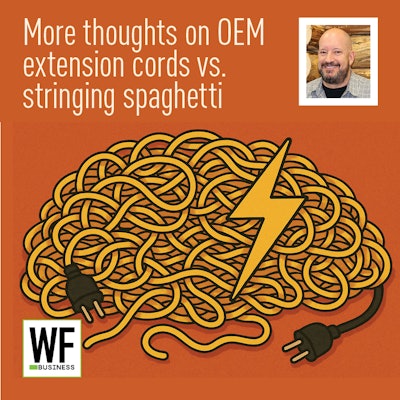
I answered a question in the April/May 2025 issue of WFB from a pro: “Can I replace the twist-lock plug on my edger?” A comment ensued in response to what I wrote, and the commenter wrote: “Technically a smaller gauge cord doesn’t pull more amps. Because of its smaller size it simply cannot supply enough current (amperage) that the motor requires and thus shortens the motor’s life.”
Here are my thoughts on that.
Without pretending to be an electrical engineer who is capable of baffling most of us with just a sentence or two of deep verbiage on the subject, I can say I have a good deal of experience (27 years and counting) working with these sanding machines. It is not uncommon at all to observe amp draws of these machines as they are serviced, as each one that comes in for a full-on tuning gets an amp draw test. When we observe amp draws while sanding with these machines, we will always note the amp draw goes up while the machine is being worked harder from where we start out from. In the case of an edger, we will see the amps go up from when the disc is spinning freely vs. when it is contacting the work surface. The amps keep going up as more pressure is exerted for sanding operations. This is because in order to work harder, the wattage demand of that motor goes up. The voltage supplied from the outlet to the motor doesn’t change to increase the wattage as it really can’t, but the amperage draw does change, and to achieve more wattage, it has nowhere to go but up.
I can say with certainty that I have seen first-hand amperage draw tests involving different gauges of extension cords at different lengths. Comparing the amp behaviors when the same machine with the same grit of sandpaper is run from an OEM extension cord vs. a longer and thinner cord, the observable trend is pretty much always the same: The amp draw before the machine begins working is not typically much different from one to the other, but once the machine gets to work, we really see a big difference. The longer, thinner cord exhibits a much steeper climb in amps than the OEM. It reaches a bog-down point with noticeably less pressure exerted in sanding, and at that point has its highest amp draw. Any more pressure (usually within what’s normal in sanding) is likely to stall the motor. The OEM extension cord allows a noticeably broader range when it comes to working that edger. Pressures that would stall that motor with the long and skinny are no problem with the OEM. The amp draw is less as well. You can, of course, push down so hard while using an OEM cord that the motor will stall with that cord, as well, but it takes considerably more.
So when I say that using a long piece of spaghetti to run your edger is pulling higher amps as opposed to the OEM extension cord you should be using, it is true. Depending upon the severity of the difference in length and conductor gauge, you are closer to stalling out that motor, even if you aren’t so keen to it while sanding, and the closer you are to stall-out, the higher your amp draw will be. You are, in effect, sanding at a higher amp draw with the long and skinny than you are with the OEM. This is something you can count on any time you choose spaghetti over the OEM.
To get on with why this is so bad, it all comes down to heat. The long and skinny has a more restricted pathway for the electricity to travel. This constriction does result in a voltage drop, which when that occurs, the wattage requirement in running the machine adjusts to a point with a higher amp draw. Wattage = Volts X Amps. The machine can’t work as hard without either stalling out or creating more heat in the cords, plugs and motor windings.

























